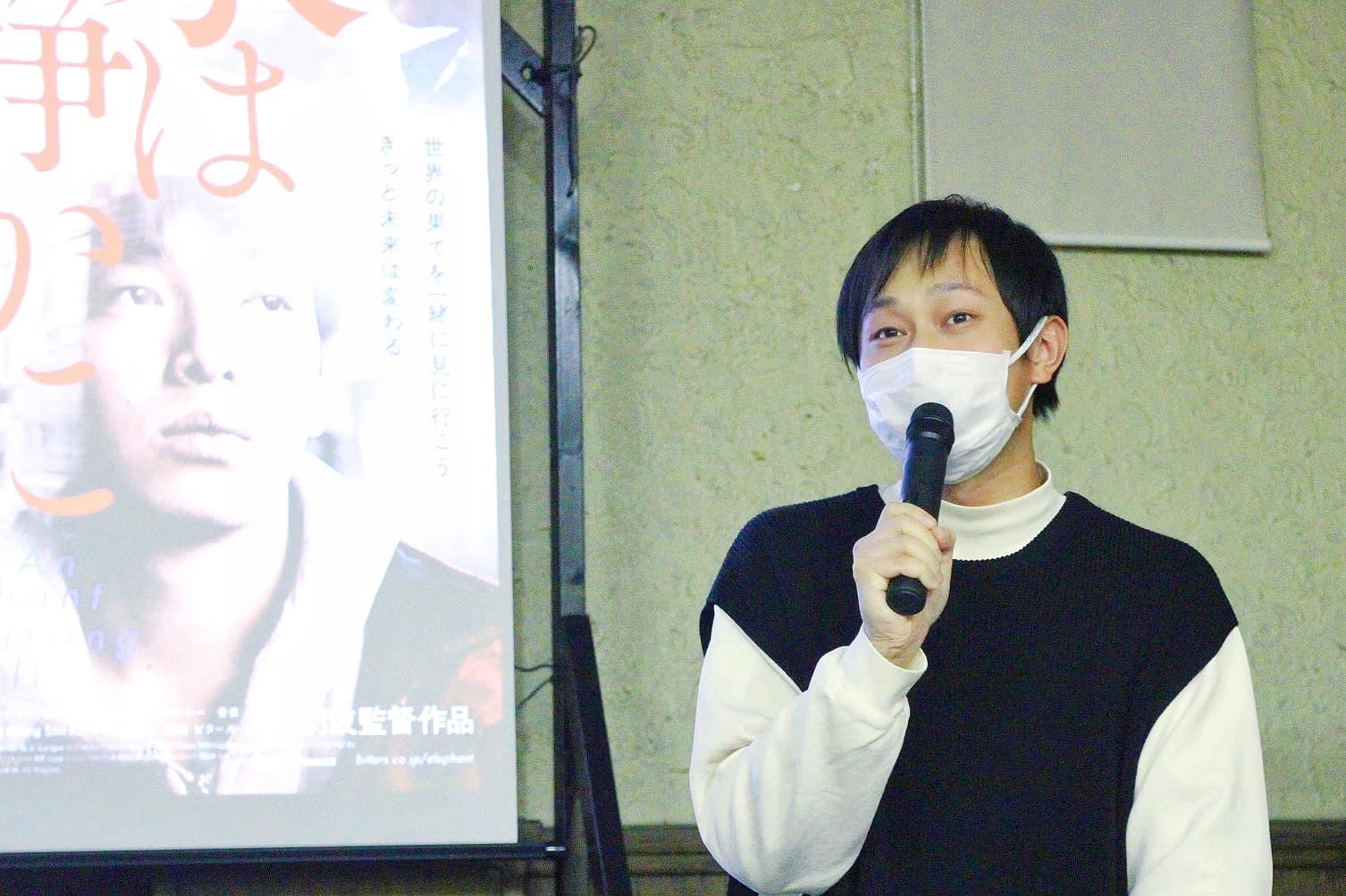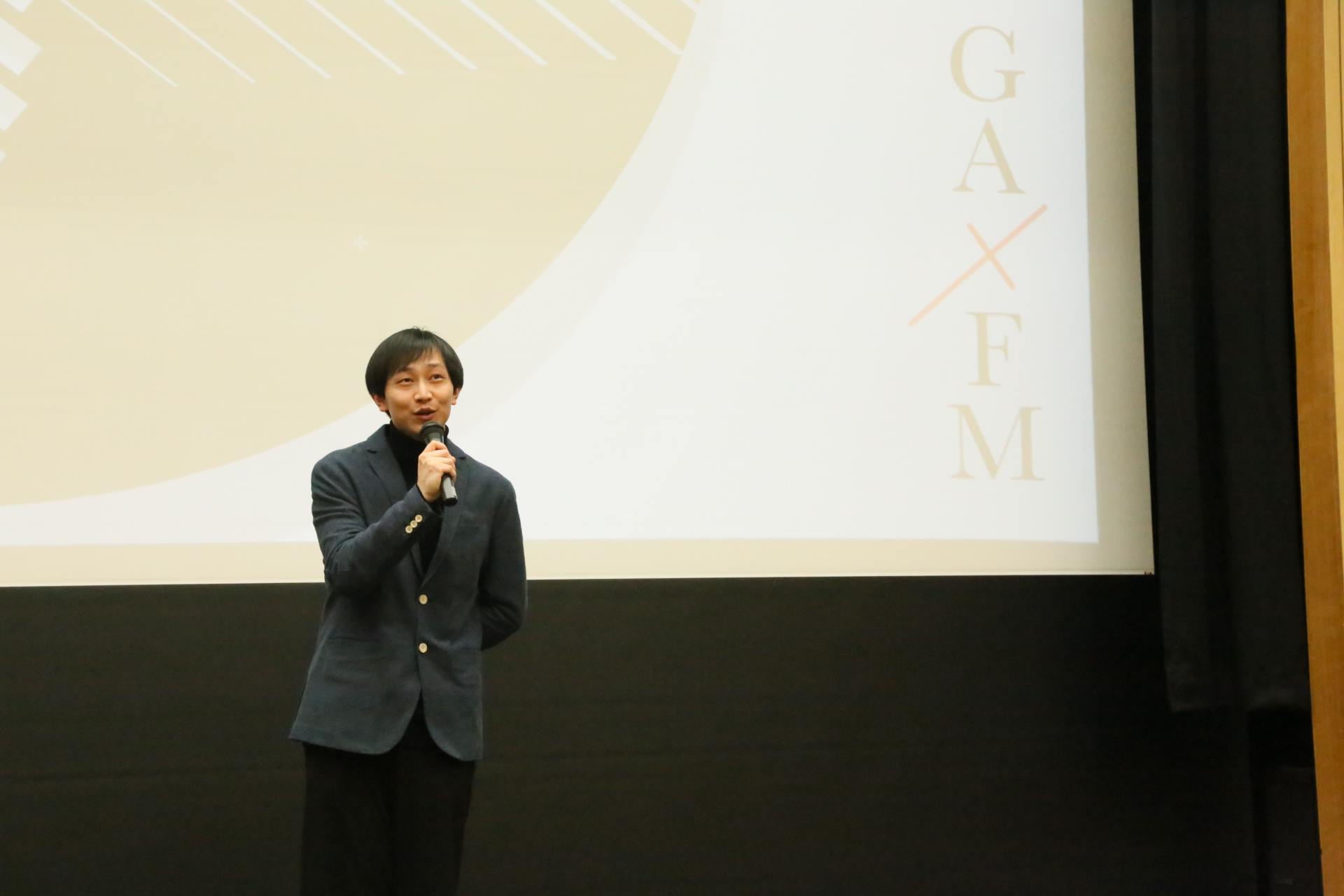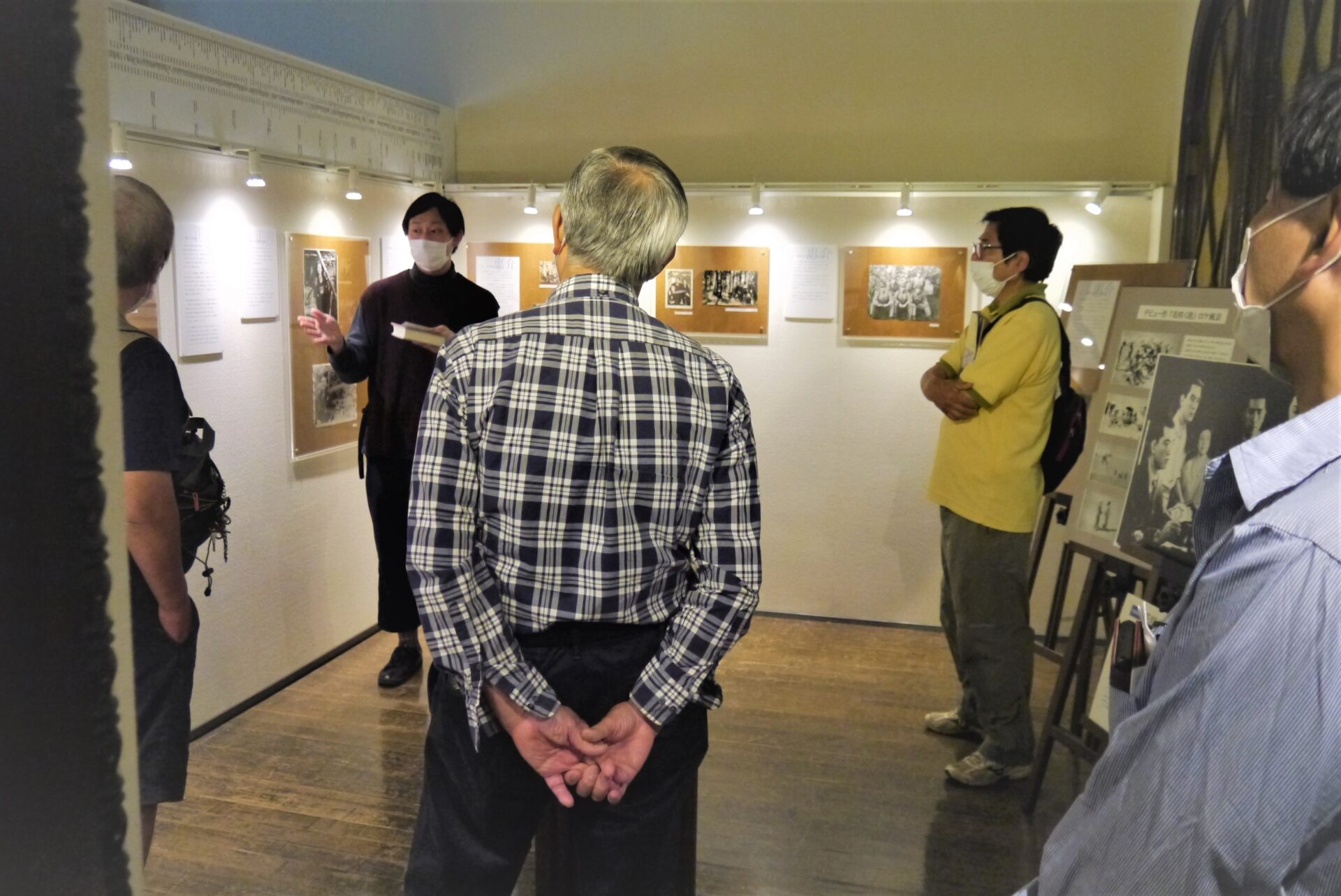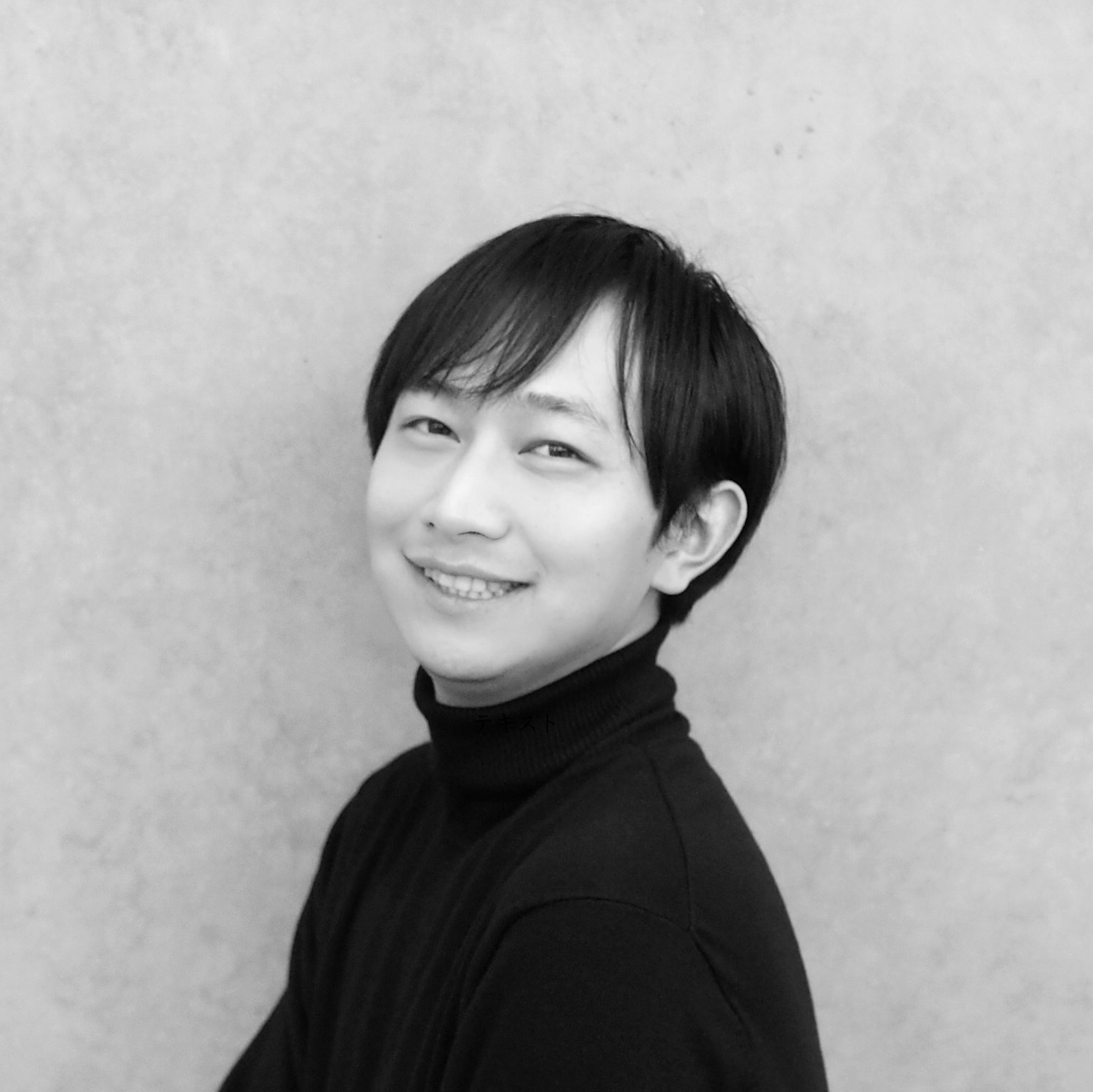Enchanted by Japanese culture, he made his visit The more he learned, the more curious his heart became
Keisuke Kinoshita Memorial Museum (Old Hamamatsu Banking Association)
Curator Mr. Tai Shūki

Today we will be chatting with Mr. Tai Shūki, a Chinese national who is working as the current curator of the Keisuke Kinoshita Memorial Museum (Old Hamamatsu Banking Association). He moved to Japan after graduating in 2015 with a major in Advertisement Directing from the Beijing Film Academy, a specialist cinematography institution. Following this, he completed a master’s degree at the Graduate School of Film and New Media at Tokyo University of the Arts, and a master’s degree in Art Production at the Graduate School of International Art Creation of the same university. These days he works in the Keisuke Kinoshita Memorial Museum and the Kamoe Art Centre while also taking graduate classes in art management from the Shizuoka University of Art and Culture. Today we would like to ask him why he came to Japan, the differences between Chinese and Japanese film-making, and what he finds charming about Japanese culture.
~ So, how did you come to Japan?
Ever since I was a child, I have always had an interest in Japan because of anime and games. I particularly liked Pokémon and Doraemon. When I was attending the Beijing Film Academy, the first Japanese movie I saw was Keisuke Kinoshita’s “The Ballad of Narayama” (Narayamabushikō). I was fascinated by this worldview of traditional Japanese culture, like Kabuki and Nō, and really wanted to experience it firsthand, so I decided to go to graduate school in Japan.
~ What kind of place did you think Japan was when you were a child?
When I was in school, I inevitably learned about the past and events of the war; so after learning about it all, I thought that Japan was a scary country. Even though I was just a child I wondered how the people of such a scary place could create Pokémon, Doraemon, and other cartoons which allowed people to dream and be brave. However, this changed when I actually worked with Japanese people, I was touched by their kindness and I could finally understand how those cartoons were made after all.
~ Could you tell us why you decided to choose a university where you could major in directing?
I really loved drawing, so I wanted to go to a university where I could study something creative. At a guidance session in high-school I was told that getting into a university for the arts was really difficult so I gave up on the idea. Other than art, I was interested in working in film and television, so I sat the entrance exam for the National Beijing Film Academy which has connections to work in the film industry.
~ I’ve heard that it’s quite difficult to get accepted to a the National Beijing Film Academy.
It’s a top class university in China with a 0.42% admission rate. It’s popular because it’s the only national university in China where you can study cinematography.
~ How do you find Japanese? Have you been able to master it yet?
After graduating from Beijing Film Academy, I decided I would continue my studies on at Tokyo University of the Arts, so within 9 months I achieved a level of Japanese where I wouldn’t be hindered academically. Taking Japanese classes at school was simply not enough, so I made as many opportunities as possible to speak Japanese and study that way too.
~ But you’re able to use both honorific and humble language, it’s very impressive!
There are some things which are still quite iffy for me, but as I have to interact with higher-ups and those in the art world at work, I have had to put a lot of effort into practicing honorific and respectful Japanese.
~ It’s been 7 years since you first came to Japan, and 3 since you came to Hamamatsu. Could you tell us about your impressions of Hamamatsu?
Before coming to live in Hamamatsu, I had already lived in both Tokyo and Yokohama. Before moving here to work, I didn’t actually know anything about Hamamatsu, but since living here I realized that the people here are generally very close-knit – relationships with local people are deep and it’s a very comfortable place to live. Cities can have an almost oppressive atmosphere, and can sometimes feel claustrophobic, but since coming to Hamamatsu I feel much lighter and at peace. Everyone here is so kind, so I am very thankful.

In 2015, Tai Shūki entered into a master’s degree at the Graduate School of Film and New Media at Tokyo University of the Arts. After graduating, he worked as an intern in the Imagery Department of the Tokyo Photography Gallery and as he wanted to deepen his understanding of Japanese culture, he also started searching for a more permanent position. Due to the COVID-19 pandemic, the option to return home to Beijing was on the table, but as fate would have it, another role presented itself – a chance to work at the Memorial Museum for the first Japanese director he had seen. He threw his hat into the ring, and his application was successful. From April 2020, he started his role at the Keisuke Kinoshita Memorial Museum and became responsible for the planning and staging of all events related to film. Currently, Tai also attends Art Management classes as a graduate student in Shizuoka University of Art and Culture, to learn about cultural initiatives while he works as a curator. In the next section, we’ll take a look at his work!
Seeing both China and Japan objectively,Has allowed him to become a bridge between the two
~ As you mentioned earlier the first Japanese film you saw in China was Keisuke Kinoshita’s “The Ballad of Narayama” (Narayamabushikō) . How do you feel being able to work at the memorial museum for a director who had such strong love for Japanese culture?
Fate is a strange thing. I wonder if it was just a total coincidence that seeing Keisuke Kinoshita’s directing skills through his movie is what brought me to Japan. I was told by both my university professor and my senior where I did my internship that foreign people need to work hard and become model workers to be hired by Japanese cultural foundations and institutes, so I’m forever grateful that I was able to pass the interviews.
~ Could you tell us a bit about what your job entails?
Well, this year is the 110th Anniversary of Keisuke Kinoshita’s birth. For the occasion we have produced a Memorial Symposium Plan, we plan to cover a wide range of activities such as: holding screenings of his films on the 3rd of every month, inviting professors from outside our department to hold sessions on his work, hosting panel discussions and workshops to analyze his films from different angles, advertising his works, and holding exhibitions. As I am the only curator, all things related to film are my responsibility.

~ I heard your opinions on film changed after your 15 minute short-film, “Yuxiang Sushi” (魚香寿司, 2015 ) was played at an Iranian International Film Festival !
Yes, after going to the Iranian film festival, my sense of value for film changed drastically! Up until that point, I was always single-minded – “I want to be a director”. But I realized that films attract various people who support films in many different ways – those who produce films, those who review them, etc. After connecting with people who were all involved in film but in different ways, I felt more interest in the film industry and jobs related to film on the whole. I first completed my degree at the Graduate School of Film and New Media at Tokyo University of the Arts, and then I felt that I needed to study more, so I began my studies of Art Production at the Graduate School of International Art Creation. These degrees allowed me to learn a lot about both sides of the industry – those who create films and those who support them, and as a result the way that I view and value films has changed a lot.
~ Is it true that you’re currently attending a master’s degree in Shizuoka University of Art and Culture?
Yes, I’m currently enrolled in an Art Management Course there. The director of the Keisuke Kinoshita Memorial Museum also attended the Shizuoka University of Art and Culture and agreed that I should go too. I can use the theories I learn at university directly at my workplace, and the atmosphere for learning is the best, and I am so thankful for that.
~Could you tell us some differences between Japanese and Chinese film-making?
Due to strict political censorship, it is rather difficult to produce films with themes of politics, horror, and religion in China. Japan respects freedom of expression, so you can make any genre of film you wish to here. These days, many Chinese directors who are looking for greater freedom of expression are going abroad to work.
~What are your plans for the future?
As I can see both China and Japan from an objective point of view, I can share the positive sides of both countries to one another and become a bridge between them – well, that’s my dream at least! I hope that someday I can harness the power of film as a tool to foster good relations between our two countries.
~ We look forward to seeing what you get up to in the future! Thank you for today!

Tai Shūki (戴 周杰)
1993: Born in Yueyang, Hunan Province, People’s Democratic Republic of China
2015: Moved to Japan after graduating from the Beijing Film Academy with a major in Advertisement Directing.
2018: Completed a master’s degree at the Graduate School of Film and New Media at Tokyo University of the Arts.
2020: Completed a master’s degree in Art Production at the Graduate School of International Art Creation of Tokyo University of the Arts.
2020: Finished working as an intern in the Imagery Department of the Tokyo Photography Gallery and left his role as an assistant at the 12th Yebisu International Festival for Art & Alternative Visions.
2020: Found employment in the Keisuke Kinoshita Memorial Museum and Kamoe Art Centre in Hamamatsu. He is currently active as a curator for the museum.





